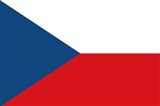
in Central Europe
which existed from October 1918, when it declared its independence from the Austro-Hungarian Empire, until 1992. From 1939 to 1945, the state did not de facto
exist because of its forced division and partial incorporation into Nazi Germany
, but the Czechoslovak government-in-exile
nevertheless continued to exist during this period.
1918 World War I: Czechoslovakia is granted independence from Austria-Hungary marking the beginning of independent Czechoslovak state, after 300 years.
1918 Czechoslovakia becomes a republic.
1919 Austria and the Allies sign the Treaty of Saint-Germain recognizing the independence of Poland, Hungary, Czechoslovakia and Yugoslavia.
1938 Adolf Hitler demands autonomy and self-determination for the Germans of the Sudetenland region of Czechoslovakia.
1938 Mobilization of the Czechoslovak army in response to the Munich Crisis.
1938 At 2:00 am, Britain, France, Germany and Italy sign the Munich Agreement, allowing Germany to occupy the Sudetenland region of Czechoslovakia.
1939 World War II: German troops occupy the remaining part of Bohemia and Moravia; Czechoslovakia ceases to exist.
1942 World War II: in retaliation for the assassination of Reinhard Heydrich, Nazis in Czechoslovakia kill over 1,800 people.
1944 Soviet Union invades Czechoslovakia.
1948 Communist revolution in Czechoslovakia.

